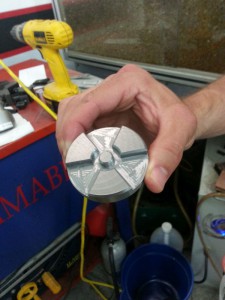I’m continually amazed at just how many XRD users we encounter who are only vaguely aware of what their machines can do. These instruments are relatively simple in mechanical terms, but the data they generate can unlock an amazing array of information about the sample. We’ve traveled all over the country over the last 40 years and spoken with countless XRD and XRF users. Many of these are novice users who understand the basics of their application, but little more. Some were relying on courses they’d taken in college many years before. Many had attended one class or another, but rarely felt they came away prepared for the work they’d be doing. I’ve heard so many people describe the information going “straight over my head” that I’m convinced there’s a better way to train users on the broad scope of analyses their diffractometer can perform.
We began offering training classes as soon as we started Texray hoping to fill the gap between tedious trial-and-error and, for some, ineffective large format courses. Along the way we’ve expanded our class offerings to include everything from basic theory (even general chemistry) to advanced analytical techniques such as Rietveld refinement among others. Texray is also certified by MDI to offer field training classes on all their analytical software. This allows us to arrange for demo licenses of some very powerful software for all attendees for the duration of the class.
Flexible:
Many of the clients we’ve worked with have small gaps in their knowledge which leaves them lost on the first day of a large format class. In our small groups, the curriculum is determined by the current knowledge level of the attendees and their own goals. No time needs to be spent on applications which they’ll never use and no one gets “left in the dust” on day one. Multi-stage classes begin with basic theory and progress to advanced techniques to allow for new users to get their feet wet and experienced users to broaden their skills all in a single session. Attendees may jump in and out according to their skill level.
Economical:
When a company is asked to send an employee for outside training, it usually requires a full week of their time during which they’re not covering their usual responsibilities. Travel costs and down time usually mean that a given lab will only send one or two primary users to the training class. With an on-site course from Texray, attendance is unlimited. Training two or more users represents a huge cost savings. There’s no faster or more economical way to bring your whole team up to speed.
Effective:
A highly skilled instructor comes to your site. You’ll work with your own hardware and software to eliminate the learning curve which can become an significant obstacle after large group courses. You’ll receive training targeted specifically to your applications and at a pace dictated by the attendees, not a fixed curriculum. All attendees will be provided with temporary licenses for Jade 2010 software for hands-on work throughout the class.



